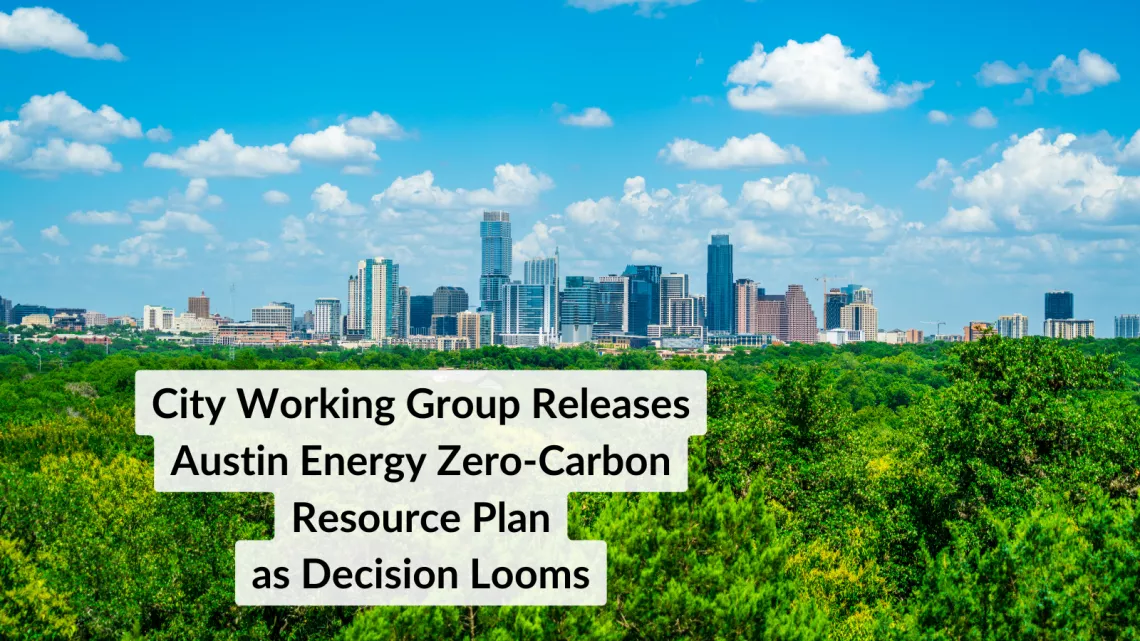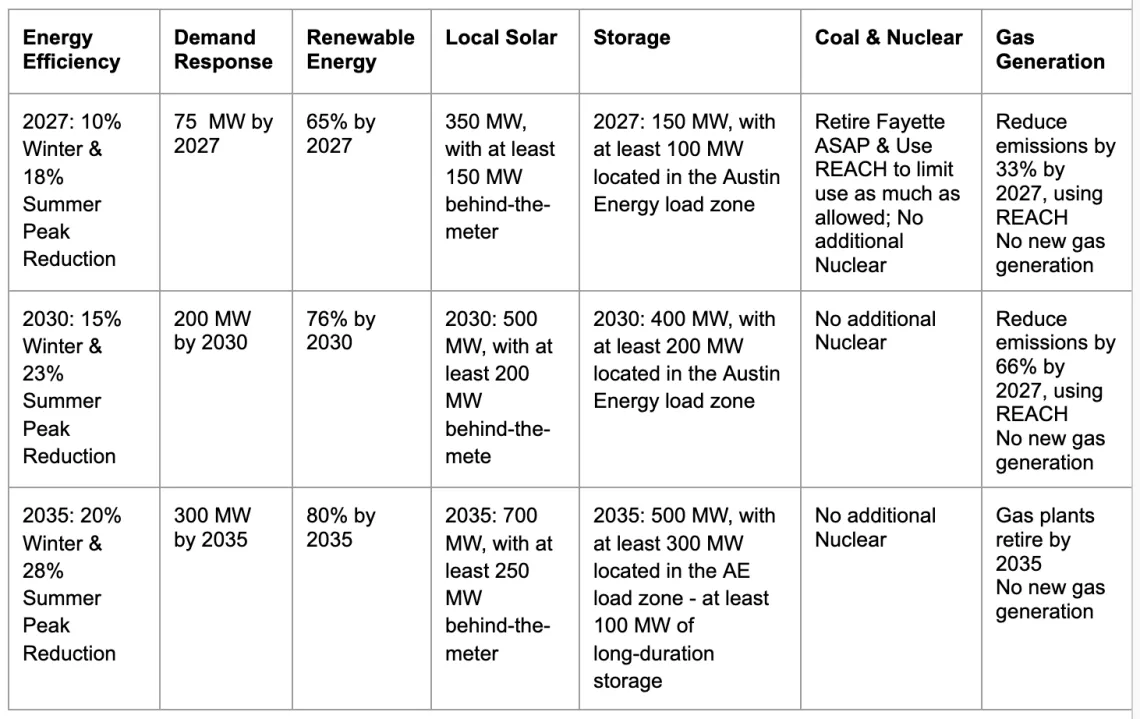
Original photo via Canva: RoschetzkyIstockPhoto
By Cyrus Reed
For the past several months, Austin’s city-owned utility, Austin Energy, has been in a process of updating its Resource, Generation, and Climate Protection Plan (Resource Plan). Sierra Club Lone Star Chapter has been working throughout the process to keep the public informed and engaged to make sure Austin Energy prioritizes clean energy, community needs, and transitioning the city off of fossil fuels as soon as possible. (More background is available here.)
The Electric Utility Commission (EUC), an advisory committee to the Austin City Council, will begin the decision-making process on Austin Energy’s Resource Plan tonight, Monday, February 12, when they meet at Austin Energy Headquarters from 6 to 8 PM. The EUC formed a working group back in September of last year to begin work on an update to the Austin Energy Resource, Generation, and Climate Protection Plan to 2030. Consisting of 16 members, including five from the EUC, four from the Resource Management Commission and nine members of the community, on February, 2024 the EUC Working Group released their recommendations, which are available here, as well as a powerpoint presentation, which can be found here.
Before the working group put forth its recommendations, Austin Energy itself proposed several different scenarios. Most of these relied on a heavy investment in hydrogen – an underdeveloped and unproven technology that we have expressed doubts about.
While the EUC could take action tonight, Austin Energy has indicated they need more time to analyze the recommendations - and potentially provide their own - meaning most likely a decision would be made at the next EUC meeting, scheduled for March 18. Because Austin City Council acts as Austin Energy’s board of directors, the full city council will need to vote on a new Resource Plan likely in late March, but it could be extended even further depending how the process plays out.
OK. So what’s in the plan? Carbon-free by 2030?
Not quite yet. While the working group recommendations do not quite get to carbon-free by 2030, they almost get there (about 95%), and do get to carbon-free by 2035. However, the plan does include ambitious goals to get to 80% renewable energy, 500 MWs of battery storage, 300 MWs of demand response, 750 MWs of local solar, and significant investments in energy savings programs to reduce winter peaks by 20% and summer peaks by 28% by 2035. The working group’s plan also commits Austin Energy to close down its share of the 600 MW Fayette coal-fired power plant as fast as possible and limit its normal use to 150 MWs (the low sustaining limit), while reducing emissions of carbon dioxide from the use of our gas plants to 33% by 2027 and 66% by 2030. Finally, the plan explicitly states that Austin Energy should not invest in any combined cycle hydrogen capable plants, as they have suggested in their modeling.

Is it a good plan?
Yes. The plan also includes needed upgrades in transmission and a number of studies of new technologies, like ways to meet reactive power, long-duration storage, geothermal, and fuel cell technology. The cover letter to the plan discusses why investing in Hydrogen-Capable Combined Cycle plants is a bad idea, principally because until you get to 100% “green” hydrogen, the plants would increase local pollution and carbon dioxide emissions. Blending hydrogen with gas actually increases air pollution.
What’s next again and how can you get involved?
The EUC meeting on February 12th is public, as is the upcoming Austin Energy Oversight Committee on February 27th. We are asking our members in Austin to show support for a carbon-free future without coal or gas by sending their thoughts to city council. Want to meet with your city council member to discuss in person? Email shane.johnson@sierraclub.org and he will help you out.